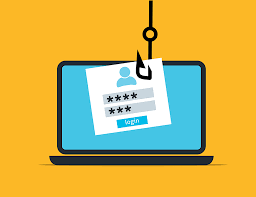We use cookies to personalise site content, social media features and to optimise your site experience.

![]() Bell -
13 October 2022 -
Cause or Directory -
794 views -
0 Comments -
0 Likes -
0 Reviews
Bell -
13 October 2022 -
Cause or Directory -
794 views -
0 Comments -
0 Likes -
0 Reviews

Phishing attacks are one of the most serious threats that every IT firm is facing. These mostly happen when an attacker tricks the victim into opening an email, message, or chat or clicking on a malicious link. In recent years, phishing attacks have increased. However, with COVID-19 causing many organisations to shift to remote working, phishing attacks have skyrocketed. A phishing email is the most well-known type of phishing attack. Almost everyone has received one of these at some point.
Phishing attacks can go beyond just email. It’s getting more and more common for users to be targeted by SMS; using phone calls and text messages. These attacks are frequently successful because we do not consider text messages with the same caution as attacks are frequently successful.
Set the software to automatically update so that it can deal with any new security threats. Maintaining the security of your computer allows you to avoid malware and direct hacking attempts aimed at stealing your personal information. You can protect your privacy and your family by using safety measures and good practices to protect your devices.
These updates may offer critical security protection. When prompted, update your smartphone's operating system to help close security gaps and improve overall performance. You know those irritating pop-ups on your computer and phone pleading with you to update your operating system? For weeks and weeks, you click or tap "Not now." These are frequently security updates, and it's best to install them as soon as possible to help protect your devices from malicious actors.
Some accounts add an extra layer of security by requiring two or more credentials to log in. This is referred to as multi-factor authentication. If scammers obtain your username and password, multi-factor authentication makes logging into your accounts more difficult. There are two types of credentials required to access your account:
Make a backup of your data and ensure they do not connect it to your home network. Your computer files can be saved to an external hard drive or the cloud. Back up your phone's data as well.
Conclusion:
Sure, they could use all kinds of fancy technologies to try to prevent phishing attempts. However, the most effective approach would be to develop a customised strategy based on a specific business context. Small businesses, on the other hand, may find that focusing on employee education and best practices while keeping software investments low is far more cost-effective.
What is certain is that without adequate mechanisms to prevent phishing protection attacks, organisations will continue to face serious legal and financial consequences.

Copyright © 2025

